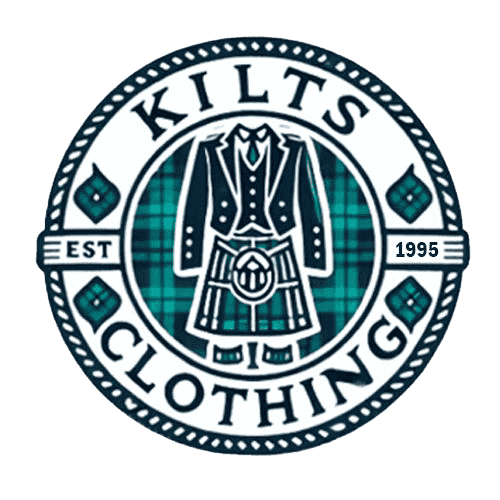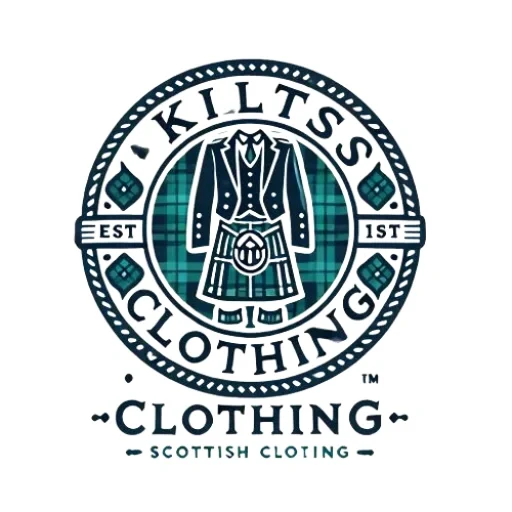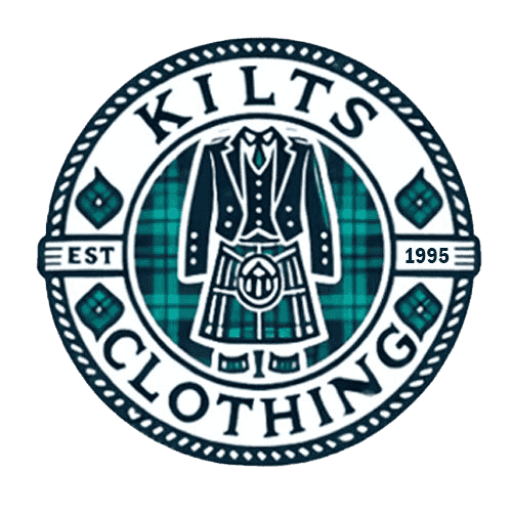What to Wear With a Kilt – Women’s Fashion Guide
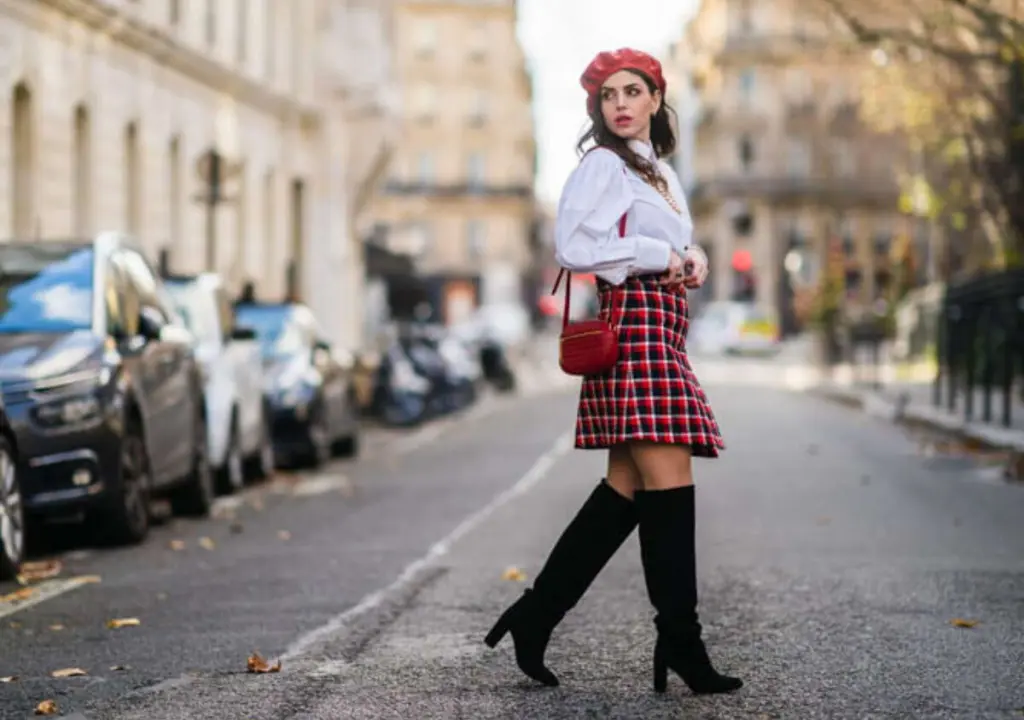
The womens kilts, a symbol of Scottish heritage, has evolved into a versatile fashion statement for women. Whether attending a formal event or enjoying a casual day out, knowing how to style a kilt can elevate your look and showcase your unique fashion.
In this comprehensive guide, we'll explore various kilt outfits for women, accessories, and tips to help you wear your kilt with confidence and flair.
Accessorizing Your Kilt Outfit
Accessories can elevate your womens kilts outfit, adding both functionality and style. Here are some must-have accessories and tips on how to wear them.
Essential Accessories
A sporran is a must-have for any kilt outfit. This traditional pouch serves a practical purpose and adds a distinctive flair to your look. For formal events, choose a dress sporran with ornate details. A day sporran made of leather or fabric is ideal for casual settings.
Belts and Buckles
A leather belt with a decorative buckle can accentuate your waist and complement your kilt. Ensure the design aligns with the kilt's tart kilt's belts with ornate buckles that can add a touch of tradition and elegance to your outfit.
Shawls, Scarves, and Capes
Shawls, scarves, and capes are excellent for adding warmth and style. They are particularly useful in cooler weather and can be coordinated with your kilt's colokilt patterns. A fly plaid draped over the shoulder can also add a traditional touch.
Jewelry
Jewelry such as necklaces, earrings, and brooches can add a personal touch to your kilt outfit. Simple, elegant pieces work best to enhance your look without overwhelming it. For a traditional touch, consider wearing a brooch or clan crest badge. A kilt pin and Sgian Dubh (a small, ornamental knife) can also add authenticity and style to your ensemble.
Choosing the Right Kilt
Selecting the perfect kilt is more than a fashion decision; it's about creating a stylish and appropriate look for the occasion. The fit, fabric, and pattern are pivotal elements that influence how your kilt looks and feels. A well-chosen kilt enhances your appearance and reflects your style and the context in which you are wearing it.
Fit and Length
The fit of a kilt is paramount for achieving a polished and flattering look. A kilt should be worn comfortably at your natural waist, the narrowest part of your torso. This placement ensures that the kilt sits correctly and provides a balanced silhouette. The ideal length for a kilt is to fall in the middle of your knee.
This traditional length maintains a classic appearance and ensures that the kilt complements the lines of your body without disrupting visual harmony. If a kilt is too short, it can affect the overall balance of your outfit, making it appear less cohesive.
To achieve the best fit, it's advisable to have your kilt tailored to your exact measurements. Custom tailoring enhances comfort and style, ensuring the kilt conforms perfectly to your body shape.
Fabric Choices
The fabric of your kilt plays a significant role in determining its suitability for different occasions and seasons. For casual wear, lighter fabrics such as cotton and linen are ideal. These materials are breathable, which makes them perfect for warmer weather. Cotton kilts are durable and easy to maintain, while linen kilts offer a relaxed, airy feel ideal for hot days.
On the other hand, wool and tweed are better suited for formal occasions and colder weather. Wool kilts provide warmth and a sophisticated drape, while tweed adds a classic and distinguished touch. These fabrics offer comfort and contribute to a more refined and elegant appearance, making them suitable for events that require a higher level of formality.
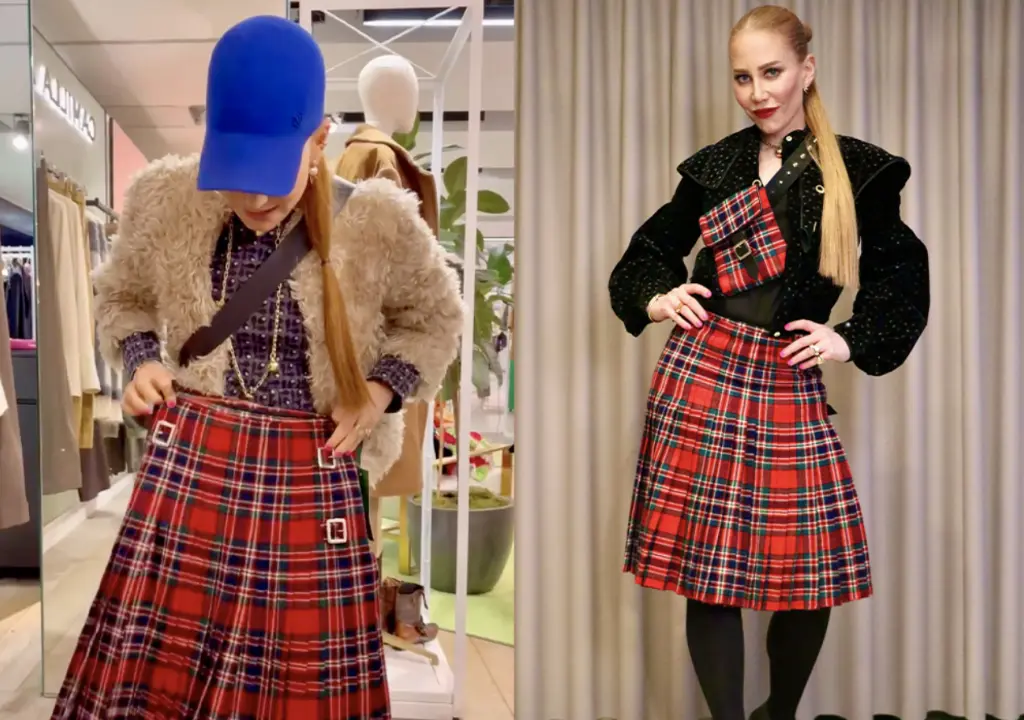
Pattern Selection
The pattern of your kilt is a defining factor in its style. Tartan is the most traditional pattern often associated with family or clan heritage. Its rich history and distinctive look make it popular for formal events and cultural celebrations. However, modern kilts are available in a variety of patterns beyond tartan. You might find kilts in solid colors, stripes, or floral designs.
When selecting a pattern, choosing one that complements the rest of your outfit is essential. A more subdued pattern can be paired with a bolder top, while a vibrant kilt pattern might require a simpler top to maintain visual balance. The key is to ensure that the pattern harmonizes with the overall look, enhancing your style without overwhelming it.
Mixing and Matching with Tops
The choice of top can greatly influence the overall appearance of your kilt outfit. Pairing your kilt with different tops can elevate or detract from your look.
Casual Tops
Consider pairing your kilt with a simple t-shirt or chambray shirt for a casual look. These tops provide a relaxed vibe that complements the kilt without drawing attention away from it. Solid colors or subtle patterns are ideal, as they help maintain the focus on the kilt itself.
During cooler weather, a cozy sweater can be an excellent addition. A sweater should complement the kilt’s fabric and pattern, adding warmth while maintaining a stylish appearance. For instance, a classic crew neck or a V-neck style can offer comfort and a touch of sophistication.
Formal Tops
Opt for a crisp dress shirt or tailored blouse for more formal occasions. These tops bring an elegant touch to your kilt outfit, enhancing its formal appeal. A Prince Charlie jacket or an Argyll jacket can further elevate the look, adding a layer of sophistication and refinement.
When choosing colors for formal tops, ensure they complement the kilt’s pattern to achieve a cohesive and polished appearance. A tailored tweed jacket can introduce additional depth and sophistication, making it suitable for upscale events.
Stylish Footwear
The right footwear is crucial in completing your kilt outfit. Your choice of shoes can either enhance or detract from your overall look, so it's essential to select wisely.
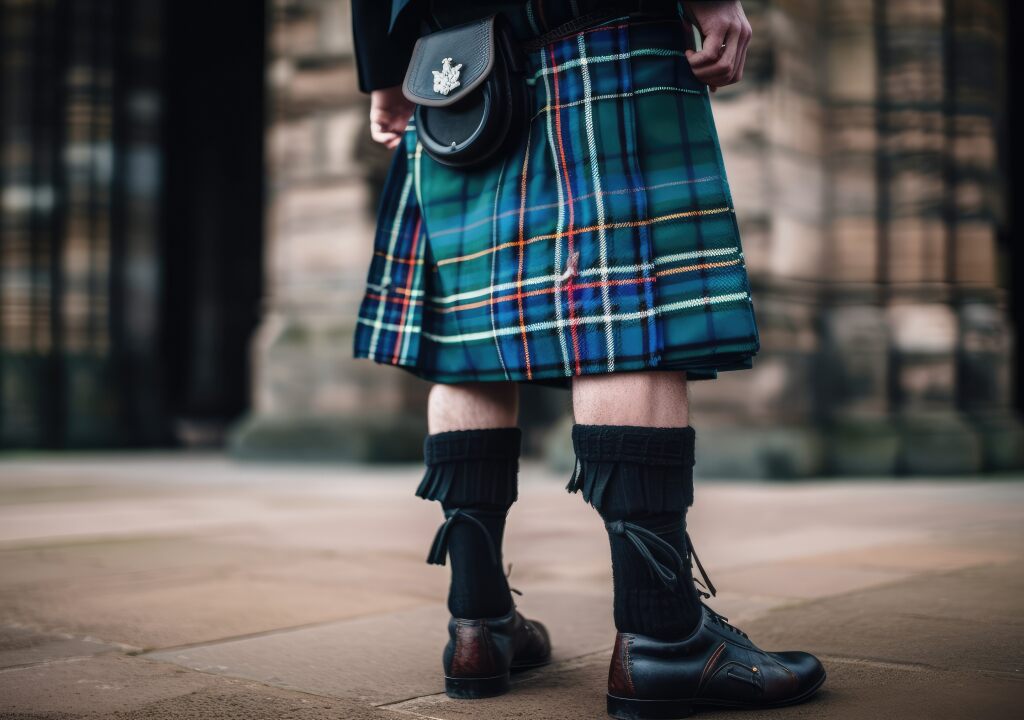
Traditional Choices
Ghillie brogues are a traditional and ideal choice for formal occasions. These lace-up shoes are crafted from high-quality leather and feature distinctive detailing that adds authenticity to your outfit. They pair exceptionally well with traditional kilts and formal tops, maintaining a classic and refined appearance. Ghillie brogues provide a polished look and offer comfort and durability, making them suitable for extended wear.
Modern Alternatives
Consider options such as ankle boots, Mary Jane shoes, or sneakers for a contemporary twist. Ankle boots offer a versatile and modern touch for casual and semi-formal settings. Mary Jane shoes and platforms can add a vintage charm to your outfit, making them appropriate for various occasions. Sneakers provide a relaxed and trendy look, particularly with casual kilt outfits. These modern alternatives offer flexibility in styling, allowing you to adapt your look to different events and settings.
Seasonal Considerations
Dressing appropriately for the season is essential for both comfort and style. The fabric of your kilt and the accompanying layers can make a significant difference.
Summer Styles
Opt for kilts made from breathable fabrics like linen or cotton in summer. These materials keep you cool and comfortable, even on the hottest days. Pair your kilt with lightweight tops and sandals for a comfortable and stylish look. The airy fabric ensures that you remain cool while maintaining a fashionable appearance.
Winter Ensembles
For colder weather, choose kilts made from wool or tweed. These fabrics provide the warmth necessary for winter while retaining a sophisticated look. Layer your outfit with tights, knitwear, and a tailored coat to stay warm and stylish. Adding boots and a woolen scarf provides additional warmth and enhances the overall winter ensemble, ensuring you look fashionable despite the chilly temperatures.
Mixing and Matching Patterns
Experimenting with patterns can create a unique and stylish look, but it requires a careful approach to avoid visual clutter.
Combining Patterns
Balance is crucial when mixing patterns. For example, if the colors are complementary, you can pair a tartan kilt with a top featuring stripes. The goal is to maintain harmony and avoid clashing. Keep the rest of your outfit simple to allow the patterns to be the focal point. Stick to a cohesive color palette to tie everything together and achieve a visually pleasing look.
Kilt Outfits for Different Occasions
Kilts are versatile and can be styled for various events, from casual outings to formal occasions.
Casual Day Out
For a casual day out, pair your kilt with a T-shirt or chambray shirt. Sneakers or ankle boots complete the look, making it suitable for festivals and casual gatherings. This combination offers comfort and style, ensuring you look relaxed yet fashionable.
Formal Event
For formal events, such as weddings, opt for an elegant blouse or dress shirt paired with a tailored jacket and sophisticated accessories. Ghillie brogues or dress shoes will add a polished touch, completing the formal appearance. Choose luxurious fabrics and intricate patterns to elevate the look and ensure you stand out on any formal occasion.
Hairstyles to Complement a Kilt
Your hairstyle can significantly impact the overall appearance of your kilt outfit, depending on the occasion.
Formal Hairstyles
Classic updos, sleek ponytails, or elegant soft curls are ideal for formal events. These styles add a touch of sophistication and ensure the focus remains on your attire. A neat and polished hairstyle complements the elegance of a formal outfit, enhancing your overall look.
Casual Hairstyles
Consider loose waves, braids, or messy hairstyles for a more relaxed appearance. These styles are easy to manage and complement the casual vibe of your outfit. Casual hairstyles add a touch of effortless charm, balancing the relaxed nature of your kilt look.
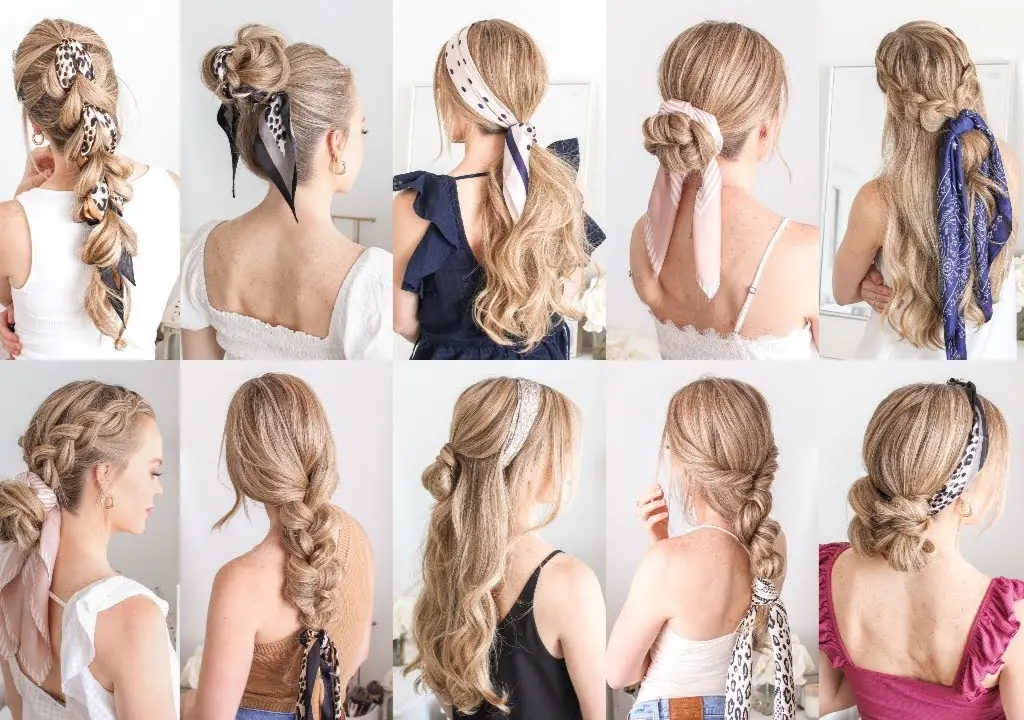
Maintaining and Cleaning Your Kilt
Proper care is crucial for preserving the quality and appearance of your kilt.
Cleaning Tips
To maintain your kilt, hand wash or dry clean it according to the manufacturer’s instructions. Avoid harsh detergents or machine washing, as these can damage the fabric and affect its shape and color. Proper cleaning ensures that your kilt remains in excellent condition and continues to look its best.
Storage Advice
For storage, hang your kilt on a sturdy hanger to prevent wrinkles. Use garment bags for additional protection and to keep it in good condition. Proper storage helps maintain the kilt’s appearance, ensuring it is ready to wear whenever needed.
Tips for Confidence and Carrying a Kilt
Confidence is key when wearing a kilt; your attitude can greatly enhance your overall look.
Posture
Maintaining good posture is essential for looking and feeling confident. Standing tall with your shoulders back enhances your appearance and boosts your confidence. Good posture improves your overall look and makes you feel more assured in your outfit.
Embrace Compliments
Accept compliments graciously and use them as a confidence booster. Wearing a kilt can be a conversation starter, so be prepared to share your enthusiasm for this distinctive fashion choice. Embracing compliments can enhance your confidence and make you feel more comfortable in your kilt.
Embracing Cultural Diversity
Kilts, though traditionally Scottish, can be embraced by anyone. Incorporating elements of your culture into your kilt outfit can create a unique and personal style statement. This approach is particularly meaningful at clan gatherings, heritage events, or contemporary styling contexts.
Incorporating Personal Elements
Adding personal touches that reflect your heritage or individuality can enhance your kilt outfit. This might involve selecting specific patterns or accessories that resonate with your cultural background or style. Incorporating these elements creates a more personalized and meaningful look.
Conclusion
Wearing a kilt is more than a fashion choice; it celebrates heritage, individuality, and style. From selecting the perfect kilt and pairing it with the right tops and footwear to accessorizing thoughtfully and maintaining it carefully, this guide provides all the tips to wear your kilt confidently. Each element, from fabric choice to pattern selection, plays a crucial role in creating a cohesive and stylish look that can be adapted for any casual or formal occasion.
Whether dressing for a casual day out, a formal event or embracing cultural diversity, the kilt offers endless possibilities to express your style. Stand tall, embrace the compliments, and wear your kilt with pride, knowing you are part of a timeless tradition that continues to evolve and inspire. Your attitude is the best accessory you can wear, and with the confidence that comes from knowing how to style your kilt, you can make a bold and beautiful fashion statement.
FAQs
Women typically pair a kilt with a blouse or tailored shirt. For casual wear, a simple top and boots work well. For formal events, opt for a dress shirt or tailored jacket.
For casual outings, choose a T-shirt or chambray shirt. For formal occasions, a dress shirt or tailored blouse is ideal. You can also add a jacket for a polished look.
The female equivalent of a kilt is often a kilted skirt. It mirrors the traditional kilt but is designed to fit a woman’s body.
Wear a kilt fashionably, ensure it fits well, and complement it with appropriate tops and footwear. Pair with jackets, accessories, and shoes that match the occasion.
Traditionally, a kilt is worn with a sporran, kilt hose, and Ghillie brogues. It’s paired with a Prince Charlie or Argyll jacket for formal events.
A sporran is traditionally worn with a kilt. It’s a small pouch that hangs at the front. Other items include a kilt hose, Ghillie brogues, and a kilt pin.
The shirt is traditionally tucked into the kilt to maintain a neat appearance and highlight the kilt’s waistband.
Traditionally, nothing is worn under a kilt. However, for personal comfort, some may wear underwear or breeches.
A kilt is a traditional Scottish garment that offers practicality and symbolizes cultural heritage. It’s worn for formal and casual occasions, representing Scottish identity and pride.
